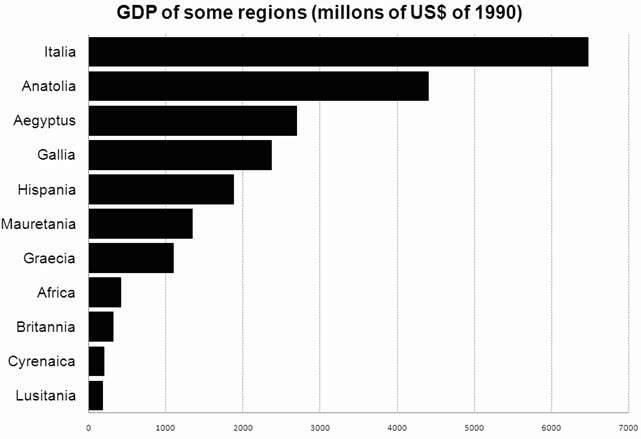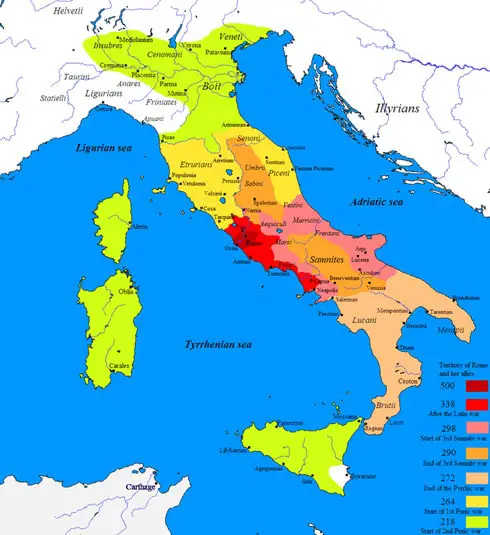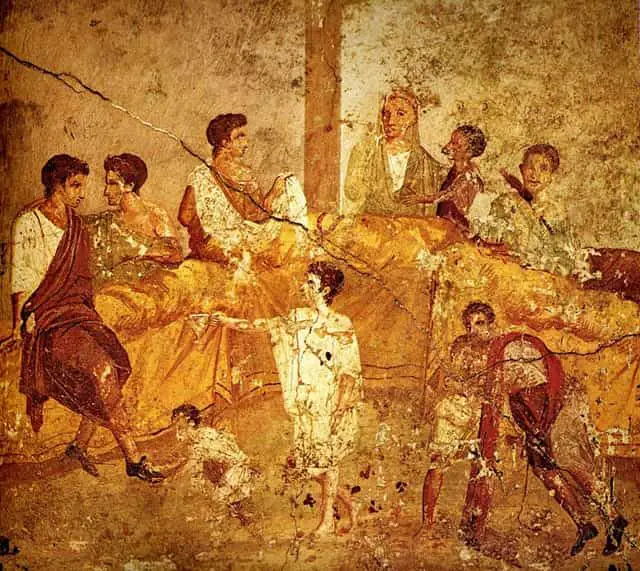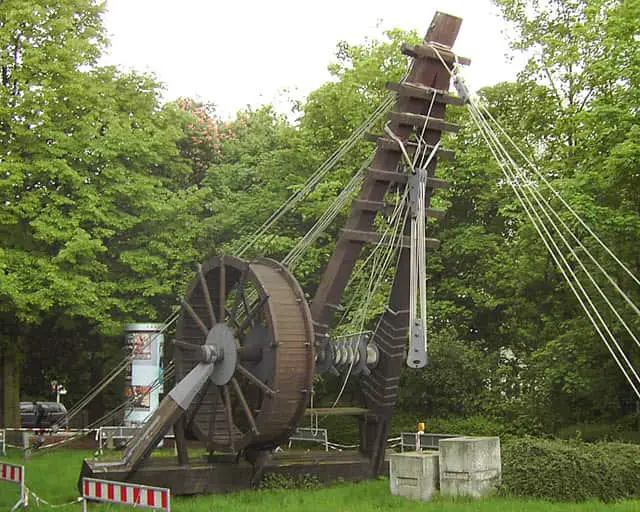Rome has continued to inspire different dimensions of modern societies. The legacy of Romans can be traced in various sectors of today, ranging from infrastructures, legal and political systems, language, culture, and even religion.
Roman civilization was one of the oldest and most powerful civilizations of the Ancient world. It remained the most developed city of the Ancient world and continued to do so till the 19th century until the advent of Industrialization.
Roman civilization during the Imperial period was one of the most influential civilizations to ever exist. It inspired every aspect of today’s world, from governmental systems to modern engineering of infrastructures.
Moreover, it shaped our daily lives in terms of Education, literature, reading, and writing culture.
As a result, the caliber of Ancient Rome’s advancement has inspired us today.
Usage of Roman Economic System in Modern countries
Content

A mixed economic system was used in Rome during the imperial period. It emerged through Roman trade when it was conducted across the Holy Roman Empire.
As the scale of trade increased, State-controlled the process to ensure the supply of goods as per demand.
State checked the quality of goods exported and ensured that the correct quantity of goods was being delivered. However, there was also a presence of free-market because the State still allowed the producers to produce goods as per their will.
In the modern world, a mixed economic system only emerged in the United Kingdom after the Second World War. It was introduced to incorporate the best aspects of capitalism and Socialism in the economic system after they failed.
The mixed economic system started in Rome has inspired today’s world because it has significantly impacted the global economy.
It has placed China in a race to become an economic superpower and is speculated to overtake the United States by 2028.
Elements of Rome in Contemporary Judicial and Political Systems

The classical period of Rome was one of the first places to make Roman laws for its people. Roman philosopher Stoic was one of the propounders of the Natural School of Law.
Some of the principles of Natural Law followed during the imperial period of Rome are prominent in today’s judicial system.
In the contemporary world, courts of law worldwide do not allow the judges to decide in the cases that they are directly or indirectly involved as per the Natural School of Law principle.
Laws had distinctions between Law and Morality towards the end of the Republic Period during the reign of Julius Caesar.
Natural School of law further expanded into divisions based on whether the related acts could gain legal validity to conduct trials in the courts.
The debate between Law and Morality has been ongoing even in the modern world. Scholars hold varying views regarding incorporating what is morally wrong to be legally incorrect.
However, jurists have distinguished legally sinful deeds as those mentioned in the laws, taking inspiration from Roman jurists’ legal texts and principles.
The Romans also created a standard practice for legal disputes whereby a plaintiff called a defendant to court and presented their case before a magistrate.
If the trial was allowed, they argued to a judge or a prominent layman who decided the verdict. Thus, the Romans inspired our court systems for trying legal cases.
The Romans introduced the concept of the Senate, which was made up of learned individuals called senators who were appointed to make laws. They debated issues relating to the Roman city and state.
Laws in Rome had to be presented before senators to be implemented. The senators debated regarding the issues and then made arguments for supporting or opposing the policies.
The magistrates and the popular assembly would vote whether to enforce the laws. However, Senators could also issue regulations during emergencies.
The concept of Parliament to make laws is found in many democracies worldwide, currently similar to that of the Senate in Rome.
Parliamentary provisions have not undergone many changes in comparison to the conditions of the Senate. As a result, the law-making process of Rome has inspired today’s lawmakers.
Inspiration of Rome in Today’s Cultures

The Romans have inspired us to build the culture of formal education. It was essential to them as even the poor, learned basic skills of reading and writing.
Children were the basics of reading and writing at home in Latin. However, they had discriminatory practices in sending children to school as only boys were sent to school from age seven.
Girls did not attend school and were taught the skills of running a household. Girls from wealthy families were tutored at home by Greek slaves that came to Rome during wars. Students would also be caned for making mistakes.
In the present world, discriminatory practices are not found in terms of educating girls in developed countries. It can be found in underdeveloped and developing countries, but there is a significant improvement in gender equality.
Practices of beating children in schools have significantly dropped with the introduction of Child Rights, but punishments are still prominent in schools which Romans also inspire.
Thus, significant positive changes have been made in Education compared to Ancient times, but Rome has most definitely inspired various aspects of the modern education system.
The expansion of Roman territory during the Imperial period helped spread the Latin language across the Roman Empire. It made Latin a basis for several other languages. Historically, a group of languages called ‘Romance languages’ evolved from Latin, including French, Spanish, Italian, Portuguese, Romanian, and Portuguese.
Roman alphabets consisted of 23 letters compared, and three letters were added to make 26 alphabets in modern English.
It has become the most widely used writing system in the world. As a result, Rome has prominently inspired the writing culture of contemporary times.
Rome has also inspired the reading culture of the contemporary world. Romans made Libraries and conducted cultural gatherings for reading.
The Roman city of Timgad had one of the largest libraries in the ancient world. It had a full-fledged library system and about 3,000 scrolls.
Rome had one of the earliest mailing systems established by Emperor Augustus around the 3rd century. It was called cursus publicus and was used to send official messages using a messenger relay system.
It helped to transfer notes and notices between provinces. The then modes of transportation were horse carts that traveled on the systematically engineered roads built by themselves.
Today, Postal delivery systems deliver letters and packages to our homes, similar to the delivery of notices in ancient Rome. Advancements in technology have made the process quicker.
The concept of delivery has also changed as letters are delivered rarely compared to the products shopped online. However, it is still used one way or the other and has made our lives easier day by day.
Caesar Augustus was the Emperor during the rise of the Roman Empire. He inspired many original literary voices to emerge during his regime, and thus, it is regarded as the golden period of Ancient Roman Literature.
It inspired prolific writers like Shakespeare to create a masterpiece play like ‘Romeo and Juliet.’ Like the Harry Potter novel series, today’s popular literature also contains Latin references used in Roman literature shaping the popular culture.
Role of Roman Inventions in Shaping Today’s World

Romans built about 53,000 miles of roads stretching across the Holy Roman Empire. They extended from Scotland and passed through Eastern Europe to Iraq, ending in Northern Africa.
The roads were constructed with long-lasting materials that formed systematically engineered highways that could resist traffic and exposure to several atmospheric changes.
Roads are built in the same way as highway systems constitute replicated Roman road systems.
Romans invented stronger Concrete to use in their buildings. It was stronger than the concrete used today as it consisted of volcanic ash and rock. Seawater reacted with the concrete to form crystals and fill holes.
They have inspired today’s scientists to discover their way of making Concrete and replicate it to make our buildings stronger.
Romans invented the Roman numerals using Latin alphabets to keep records. Traces are found as labels at the entrances to the Roman Colosseum, which was built entirely during 80 C.E.
Roman numerals are still taught today in schools to learn a newer form of representation of numbers. They are also trained to enhance children’s mental abilities so that they form patterns and connections between different numbers.
Romans formed a primitive form of the newspaper during 59 B.C. The publication was called Acta Diurna, which means ‘daily acts.’ Julius Caesar launched it as an official publication of his government.
Romans inscribed current affairs news in stones, papyri, or metal slabs and placed it in public places. The function was similar to that of modern newspapers as every sort of significant happenings were inscribed.
It helped to create a framework for the contents of today’s newspapers.
Romans invented plumbing and sewage management systems. Romans were good at civil engineering as they built technically advanced techniques to ensure sanitary management.
They connected drainage pipes and created a plan to flush them as well. They also made covered gutters and public toilets to prevent environmental pollution.
Romans invented mega extensive waterways called aqueducts, which significantly improved structures than their counterparts like early Indian and Egyptian civilizations.
They functioned with the effect of gravity alone and required no external stimuli.
Aqueducts were connected to a vast water source to supply water to houses, public taps, fountains, farms, and many more. A similar kind of engineering is used to build waterways is used in the present.
Romans invented an earlier form of the housing system in the form of apartments. Rome had more than one million population and required more space for housing.
Instead of building new homes, architects introduced stacking six to eight apartment blocks containing a central courtyard for all the inhabitants.
Roman apartments were called insulae, meaning islands. They were named islands because they occupied whole blocks with roads.
By the fourth century A.D., there was around 45,000 insulae in Rome. They were reserved for medium to lower-class citizens because the upper classes preferred their separate housing in select city areas.
Today, the concept of apartments has flourished on a grand scale. People in major cities of the world mostly live in apartments. They are made in different sizes and prices and cater to all kinds of people according to what they can afford.
It has changed the modern way of life as even houses in major cities are being turned into apartments and more and more are being built in developing countries.
Romans developed precise medical instruments that have vastly influenced many modern surgical tools. Some devices, such as the vaginal speculum, had not changed significantly until the 19th and early 20th centuries.
They used instruments such as forceps, syringes, scalpels, and bone saws made by specialist manufacturers that resemble tools of the 21st-century.
Health care was given much importance in ancient Rome. The Romans performed cataract surgery, fit artificial legs, and drilled the skull to pressure the brain. They used herbal and homeopathic medicines to cure diseases that are used till today.
Conclusion
The modern health care system is nothing but a gradual evolution of the Roman health care system and inventions. In a way, we even owe our lives to Ancient Romans. The roads we travel by, the plumbing systems we use, the alphabets we use are all inspired by Romans.
The traces of Rome found today do not do justice to the achievements made by Rome. Thus, a blend of culture with development was a key theme of Ancient Rome, which is why Rome inspires us today in every possible way.
